Technology that changes everything
Engineered with your practice and your patients in mind, the Auryon System is designed with industry-leading technology and features that allow you to treat any lesion you encounter, all with a single device built to streamline how you handle PAD.1-3
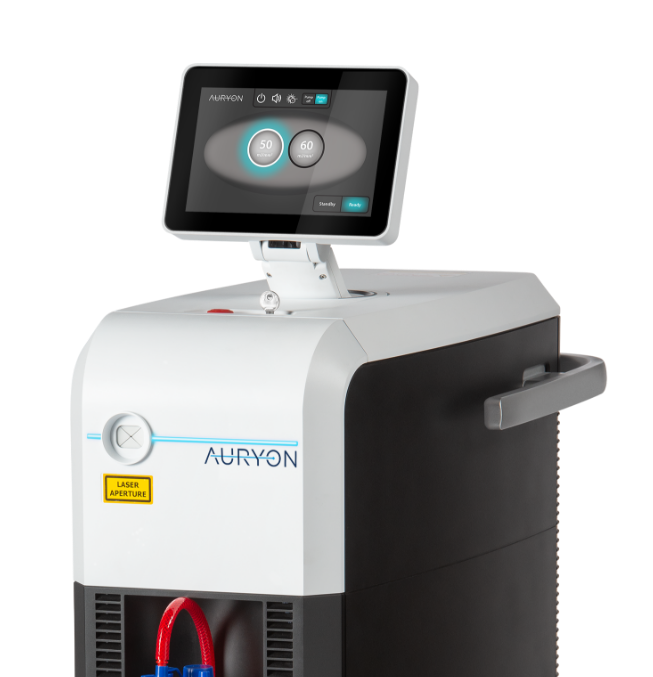
Welcome to what’s next
With the Auryon System, you get to harness the next generation of peripheral atherectomy technology.
ADAPTABLE
Treats all levels of calcification1-3
- Indicated for in-stent restenosis*
- Treats infrainguinal lesions both above and below the knee (including below the ankle)
- Built-in off-centering mechanism for eccentric lesions in largest catheter
*Only the 2.0- and 2.35-mm catheters are indicated for ISR.
PRECISE
Protective of the vessel wall3-5
- Performs targeted biological reactions to address risk of perforations
- Nonreactive to contrast media for simultaneous ablation and observation of fluoroscopy image
- Includes built-in aspiration to address risk of embolization†
†Built-in aspiration available only with the 2.0- and 2.35-mm catheters.
EFFICIENT
Designed for your lab1-3,6
- Designed to be portable, uses a 110V outlet, has a touch screen, and emits low acoustic noise
- Has the potential to debulk in fewer passages
- Small footprint, easy installation and storage
The device
Select an image to view.
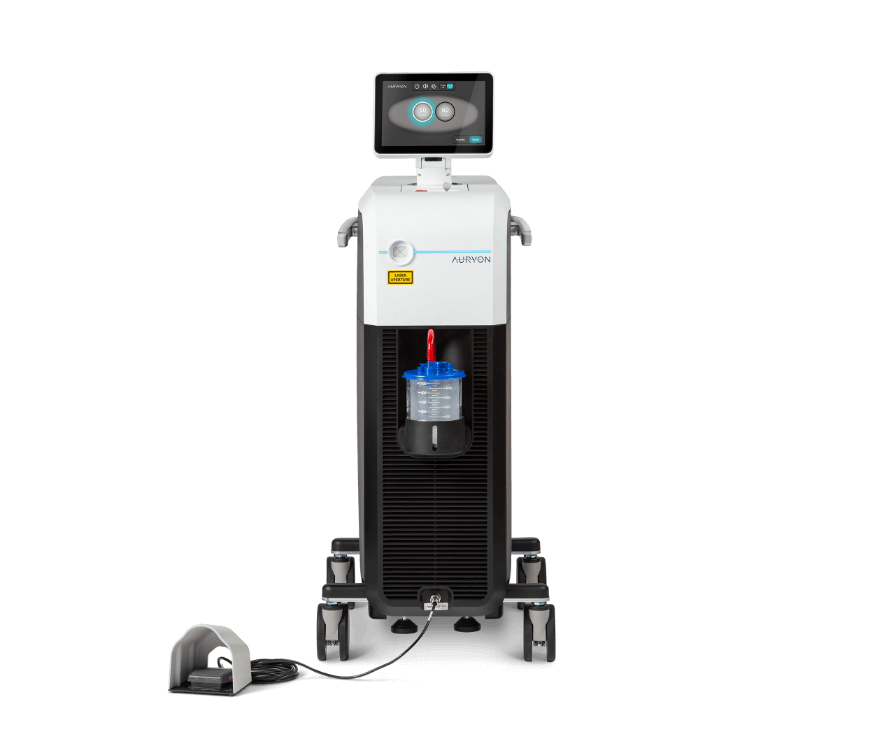
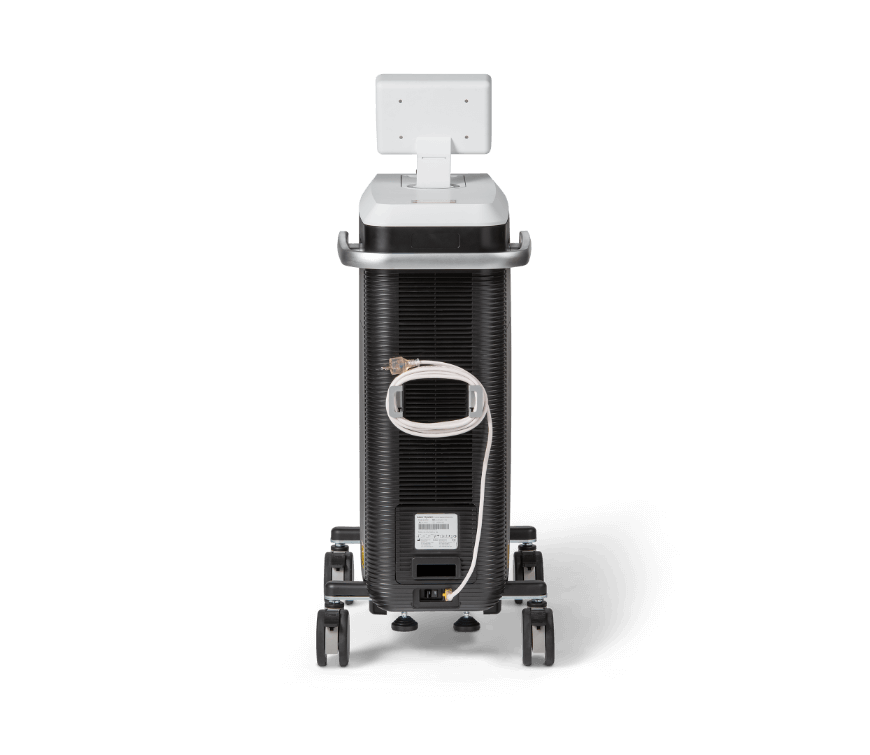
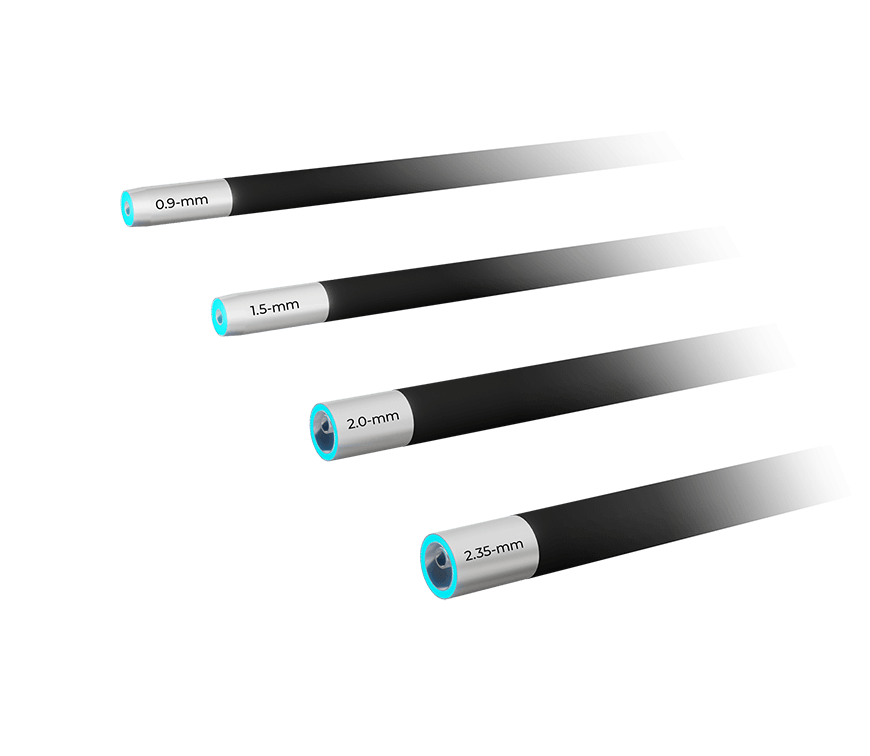
Select each icon
to discover features.
Advanced efficiency3

|
Weight
198 lb |
|
Length
29 in |
|
Height
37 in |
|
Width
13.3 in |
|
Wavelength
355 nm class IV laser system |
|
Power type
110V wall outlet |
| Small footprint, lightweight portability, and convenient storage for your office. |

|
Weight
650 lb |
|
Length
49 in |
|
Height
41.9 in |
|
Width
24 in |
|
Wavelength
308 nm class IV laser system |
|
Power type
208-230 VAC single phase power US wall outlet receptacle NEMA L6-30R, Hubble Part # HBL2620, 250BAC, 30A wall mount twist lock7 |
Treat any infrainguinal artery1,3
Purpose-built catheters are designed to treat both above and below the knee, including the ankle.

femoral artery
2.35-mm catheter
- Reference vessel diameter: ≥3.6 mm2
- Built-in aspiration capability
- Off-centering mechanism
- Cleared for ISR
- French size 7 Fr
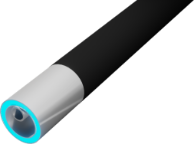
tibioperoneal trunk
2.0-mm catheter
- Reference vessel diameter: ≥3.0 mm2
- Built-in aspiration capability
- Cleared for ISR
- French size 6 Fr
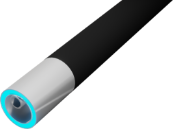
1.5-mm catheter
- Below the knee
- Reference vessel diameter: ≥2.25 mm2
- French size 5 Fr
- Now available in 225cm XL length
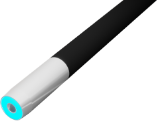
0.9-mm catheter
- Reference vessel diameter: ≥1.4 mm2
- French size 4 Fr
- Now available in 225cm XL length
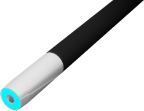
All catheters work over a standard 0.014-inch guide-wire.
The science
Powerful. And precise.
The Auryon System is designed to deliver an optimized wavelength, pulse width, and amplitude to remove calcified lesions while preserving vessel wall endothelium.3,4,8
The distance between 2 successive waves determines absorption rate and penetration depth
The duration of each pulse determines levels of diffusion
The height of the wave determines power
Why wavelength matters9-12
- Each type of tissue interacts differently with a given wavelength
- To initiate a photochemical effect, the photon energy of the beam must be higher than the dissociation energy of the target molecular bond
- Longer wavelengths are absorbed at shallower depths than shorter wavelengths, resulting in lower photon energies
Why pulse width and amplitude matter9,11,13,14
- To localize the effects to the target tissue without thermal damage, the energy delivered needs to be faster than the time it takes for the heat to diffuse
- As the type of plaque progresses from visible intimal thickening to hard, the amplitude (power) needed to ablate increases
- Greater amplitude is achieved with shorter pulses, which can deposit energy before thermal diffusion occurs
How the Auryon System combines power and precision
The precision of 355-nm wavelength4,5
- 3x higher affinity for lesion tissue vs vessel endothelium, giving you the ability to ablate the lesion while preserving vessel endothelium
- Nonreactive to contrast media, allowing you to simultaneously debulk lesions and monitor fluoroscopy images
Power to debulk any type of lesion (from thrombotic to severely calcified)3,8
- 10- to 25-ns pulse width with 40-Hz amplitude allows for high power output, resulting in calcium debulking
- Plasma formation results in vaporization of lesion tissue without thermal ablation
Efficient ablation
A shorter pulse is efficient at material removal by delivering more of the total energy above the biological threshold.14